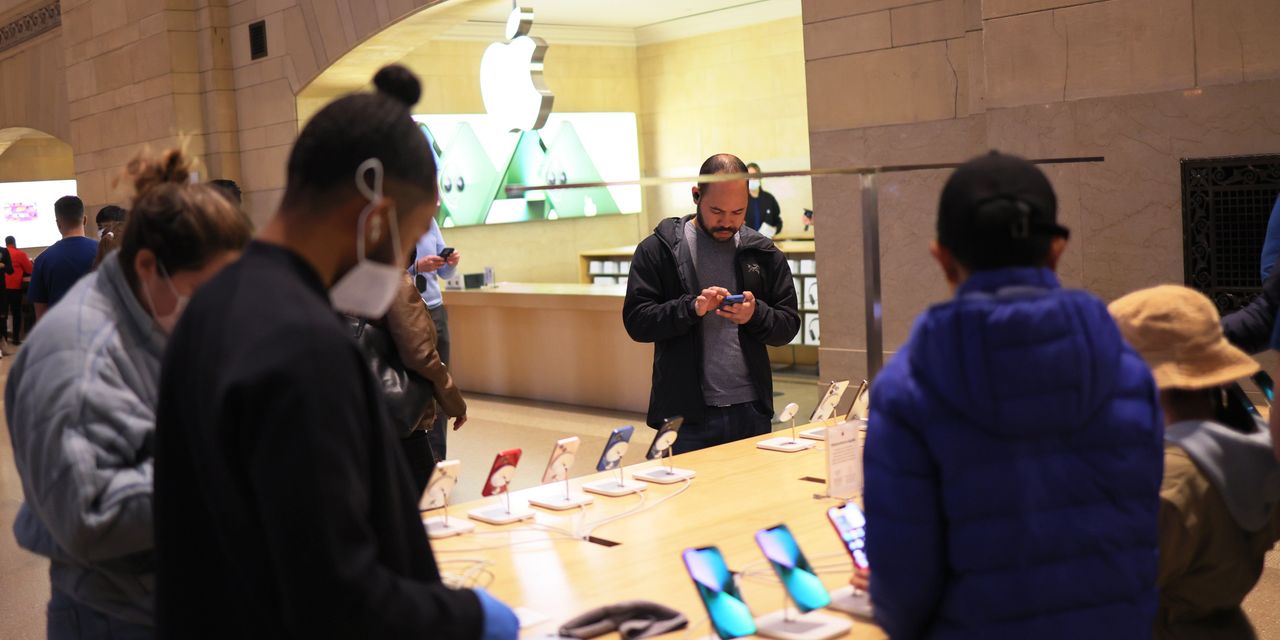
Corporate profits boomed last year, but U.S. companies might have a hard time generating much of an encore.
Earnings season has only just begun, and signs suggest fourth-quarter results will be very good. Analysts polled by Refinitiv estimate that earnings per share among companies in the S&P 500 were up 23.7% versus a year earlier. If the usual pattern holds, the actual growth figure will end up being even higher.
Credit a booming economy and sales growth that outpaced rising costs by a wide margin. Indeed, analysts estimate that profits as a share of revenues came to 12.7% in the fourth quarter, compared with 11.5% a year earlier.
A glance at the economic data casts some light on what has been going on. When the Commerce Department reports fourth-quarter gross domestic product Thursday, economists’ estimates suggest it will show that the economy grew 5.8% from a year earlier. That is a real, or inflation-adjusted, figure. Growth in nominal GDP, which includes inflation, looks as if it will be close to 12%. Meanwhile, the Labor Department’s index of aggregate weekly U.S. payrolls was up 9.7% in the fourth quarter from a year earlier. That figure suggests that, for all the talk about how wages are rising as businesses struggle to find workers, labor’s share of the economy slipped.
The earnings environment over the next year could be a lot different. Most economists forecast that the economy will slow down, that inflation will moderate and that the unemployment rate will keep falling. For companies, that trend translates to sales growth slowing, pricing power easing and wage pressures intensifying. Profits could suffer as a result.
Such a challenge for the stock market could be compounded by the Federal Reserve, which is preparing to raise rates as soon as March. Reduced earnings prospects plus better bond returns generally aren’t good for valuations.
Of course the economic forecasts could be wildly wrong, especially with a pandemic going on. But they might not be wrong in a way that is good for companies. If businesses are able to easily pass labor-cost increases onto customers, for example, they might be better able to preserve profit margins, but the Fed would get more worried about inflation and tighten more. Any significant easing of hiring strains, on the other hand, might stem from a weaker economy and slower sales growth.
The best outcome might be one where the economy grows faster than economists expect, while productivity really picks up. In that case, sales would climb quickly while workers, operating more efficiently, would be able to produce more. Wages might keep rising, but there would be plenty of money left over to feed the bottom line.
That outcome isn’t impossible. Maybe the combination of vaccines, boosters, mitigation strategies and a wall of immunity that Omicron leaves in its wake will help draw the Covid-19 crisis to a close. And maybe all the new ways of doing things companies were forced to adopt to keep running during the pandemic will unleash a wave of productivity when the pandemic eases.
But with stocks starting to wilt, recall the old saw: “Hope is not a strategy.”
Write to Justin Lahart at [email protected]
Copyright ©2022 Dow Jones & Company, Inc. All Rights Reserved. 87990cbe856818d5eddac44c7b1cdeb8
Appeared in the January 22, 2022, print edition as ‘The Market May Wince At Your Wage Hike.’








